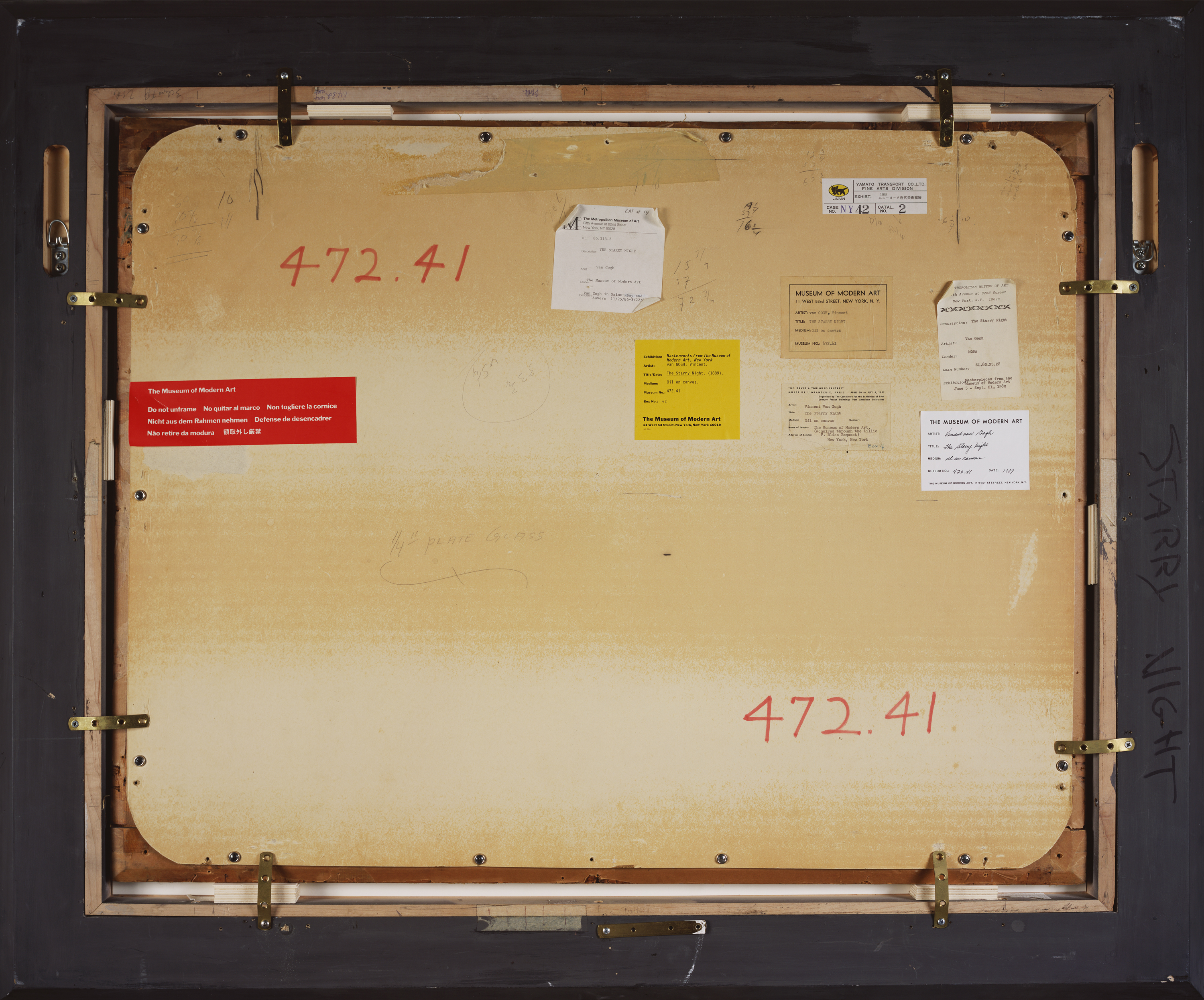What Van Gogh’s Starry Night looks like – the wrong way round

For centuries, people have been intrigued by the Mona Lisa’s smile, but Brazilian artist Vik Muniz was more interested in her back. Muniz has just opened a show at the Mauritshuis museum in The Hague revealing a side of the world’s most famous paintings that the public rarely sees: the back of the canvas.
By Senay Boztas
Talking his way into leading international museums, Vik Muniz photographed and then reproduced the flip side of paintings including the Mona Lisa (otherwise known as Leonardo da Vinci’s La Gioconda), Vincent van Gogh’s Starry Night (above) and Pablo Picasso’s Woman Ironing.
Verso is his first ever museum exhibition of this 15-year project, and also has five works based on the Mauritshuis’s collection, including Johannes Vermeer’s Girl with a Pearl Earring and Johannes Vermeer’s View of Delft.
Talking to DutchNews.nl on the phone from his next stop in Paris, he explained that in a digital world, seeing paintings as actual, physical objects is even more important – and the things he learned were surprising.
‘As images, they have the ability to transcend their physical state. They can be broadcast, exist in different scales and formats, be electronic, and be anywhere,’ he explains. ‘The back of the painting reflects the artist’s studio, it has traces of how the painting was made, and it is something that is always changing. The front of the painting stays the same.’
Labels and stickers
In the exhibition space of the Mauritshuis, 15 works sit casually against the wall, only their backs visible, and with no immediate signs of what they are. But when you look more closely, you see a label here, a sticker there, a title there…and realise that this could be the back of an image you know very well.
Muniz was first interested in the backs of paintings when he saw an installation by architect Lina Bo Bardi hung on glass easels in the Museu de Arte de São Paulo on a school trip. Instead of looking at the front, he was fascinated by the spiders’ webs and sense of medieval machinery on the back.
So when he by chance saw Picasso’s Woman Ironing facing the wall at the Guggenheim Museum 40 years later, he persuaded the director to let him photograph it. This began a series of photographs which, with the help of his framer Barry Frier and specialist Tony Pinotti, he has made into an ancient-looking collection of physical models.
Upside down
‘I think the most surprising thing is that they are very naïve: the back of the Mona Lisa, for instance, has an arrow and “this side up,”’ he laughs. ‘As if somebody’s going to hang La Gioconda upside down.
‘In the back of the wood of A Sunday on La Grande Jatte by Georges Seurat there’s an enormous amount of graffiti. People actually made marks with their names and the names of their loved ones, in a similar way you do in trees.
‘They punch holes in the back of these century-old stretchers as if they were doing it on a wall. There’s a polarisation of value there. The front is really precious and really expensive, and the back is like, you know, whatever – it’s just hardware.’
Creating these models – mostly owned by the artist – is actually a very expensive hobby. The material for relining Rembrandt’s The Anatomy Lesson of Dr Nicolaes Tulp had to be hand-made by a woman in New York who collects old looms, as it is no longer available. For the ‘Mona Lisa’, Muniz had to buy a whole tree.
Discoveries
The exhibition also contains a second room showing the time-consuming processes involved in ageing materials and recreating stamps and marks, plus a video of Muniz explaining his work. There’s also an audio-visual guide to show viewers the fronts of these famous works, and explain what the artist discovered.
Emilie Gordenker, Mauritshuis director and curator of the exhibition, said she hoped it would be the first in a series encouraging modern artists to engage with its collection of Golden Age paintings. ‘The reaction has been really positive so far,’ she says. ‘I’m looking for new ways to reconsider our old collection and this is a very good way to do it.’
It’s almost too tempting to turn a painting round, but not really advisable as it would set off an alarm. In any case, Muniz confesses what’s on the front: ‘The back gives you clear evidence you are dealing with something that’s centuries old and the front is brand new wood and canvas. It’s funny!’
The exhibition continues at the Mauritshuis until 4 September.
Thank you for donating to DutchNews.nl.
We could not provide the Dutch News service, and keep it free of charge, without the generous support of our readers. Your donations allow us to report on issues you tell us matter, and provide you with a summary of the most important Dutch news each day.
Make a donation